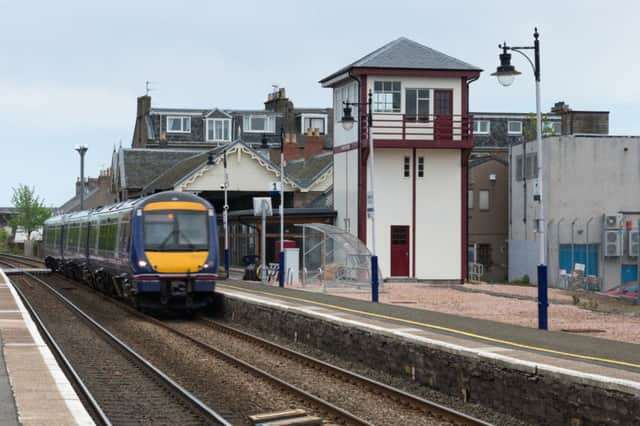Heritage plans for 70 Scots signal boxes


Rail officials are examining ways to preserve the country’s 70 boxes, which will all be replaced by signalling centres in Edinburgh and Glasgow within years.
Conservation bodies hope the success of ScotRail’s Adopt a Station scheme to transform empty station buildings into cafes, heritage centres and other businesses can be emulated for signal boxes.
Advertisement
Hide AdAdvertisement
Hide AdAmong the ideas being considered are turning the boxes into artists’ studios or tearooms. However, experts warned that many boxes are inaccessible because they are too close to the tracks, also causing potential problems for safe maintenance.
A total of 42 of Scotland’s signal boxes have listed status, ten of which have closed. Owner Network Rail has to maintain these, even after they are decommissioned.
Some of those on or beside platforms are already in alternative use, such as a holiday apartment at Kyle of Lochalsh, a waiting room at Arrochar and Tarbet in Argyll, and a railway heritage centre at Glenfinnan, Fort William.
Plans have been drawn up for a cafe in the box at Aberdour in Fife, and an office at Upper Tyndrum.
Two signal boxes in Stirling, built in 1900-1, have the highest, A-listed status, as part of the station.
The oldest box on an existing line is at Annan in Dumfries and Galloway, built in 1876.
The Railway Heritage Trust predicted signal boxes would close much faster than the official timescale.
Executive director Andy Savage said: “The ideal solution for a listed signal box is to relocate it to a heritage railway as a working box, so the technology is still used.”
Advertisement
Hide AdAdvertisement
Hide AdSavage said one candidate was derelict B-listed Murthly, near Perth, subject to funding being raised.
Another option for letting publicly-accessible boxes immediately adjacent to lines could involve their exteriors still being maintained by Network Rail.
Savage said Dalmally, Spean Bridge, Arisaig and Corrour – Scotland’s remotest station – were such possibles.
He said that otherwise, boxes could be moved elsewhere to be more easily re-used, as had happened at several places in England.
Historic Scotland, which has just completed a review of signal boxes to mark their impending closure, said it encouraged new uses.
Its spokesman said: “In recent years, new and imaginative uses have been found for a number of listed and unlisted signal boxes, including a railway heritage centre, an office, and artist’s studio, waiting rooms, a railway café and a nature observatory.”
Network Rail said closing Scotland’s signal boxes would save some £20 million a year and improve train punctuality.
Route managing director for Scotland David Dickson said: “As boxes are decommissioned, we will be looking at how we can reuse them, whether that means in another capacity in our operations, or, where the location can be safely separated from the live railway, as a commercial or community space such as an office, cafe or other visitor attraction.”